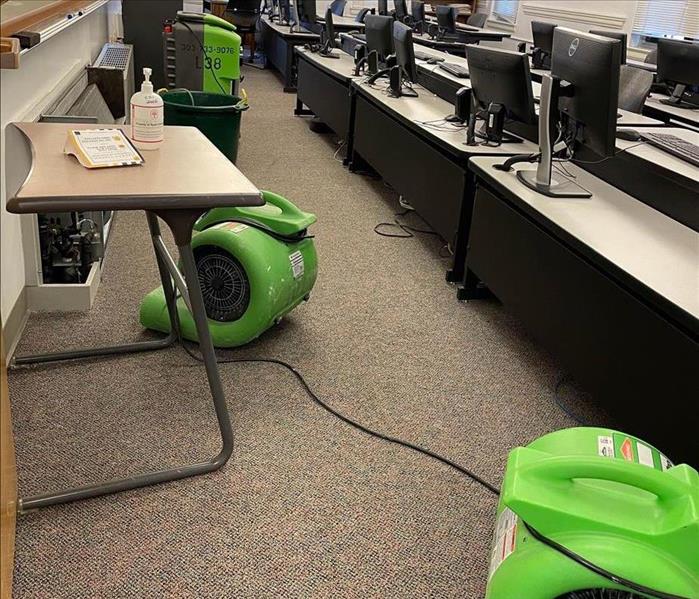Water Damage Procedure in Orlando Office Spaces
5/20/2022 (Permalink)
When professionally dealing with any hazards, you must include a step-by-step procurer that should be followed for accurate results. In the case of water damage, it has five steps: inspection and assessment, water removal, drying and dehumidifying, cleaning and sanitizing, and complete restorations.
1. Inspection and Assessment
In this step, water-damage restorations professionals make a detailed assessment by using technological equipment to identify the extent of the damage. These inspections and assessments help experts understand how to go about the damage identified, including the duration it takes to clean the damage.
2. Water Removal
After a successful assessment and inspection, the experts proceed to extract the water from the damaged surface. During this activity, experts use equipment such as submersible pumps, truck-mounted vacuums, and portable wet/dry vacuums. Water is removed from the damaged areas to avoid further damage and to pave the way for the next cause of action. When all water has been extracted, the experts conduct an additional inspection to determine the remaining moisture levels for further actions.
3. Drying and Dehumidifying
This is the third stage where restoration firms begin the dehumidification and drying procedure once the water has been physically removed from the premises. At this stage, any items that still contain water or were too difficult to reach during extraction are dried out using industrial-grade air movers and dehumidifiers.
Your office may appear dry at this point, but certain items may be damp to the touch. If left unattended, these materials may suffer more harm, such as warping, cracking, or developing mold. Water-restoration professionals avoid this by drying and dehumidifying the affected area thoroughly. During this step, water remediation professionals monitor moisture levels in the damaged regions' walls and floors to decide when your office is dry enough for professional cleaning to begin.
4. Cleaning and Sanitizing
All hygienic-restoration projects require thorough, professional cleaning with the aim of preserving as much property as possible. Cleaning and sanitizing are done in different ways such as spraying and wiping, dry cleaning, wet cleaning, foam cleaning, and abrasive or immersive cleaning techniques. Being a sensitive step, experts put on protective equipment as they are exposed to many dangers.
5. Complete Restoration
The actual restorative repair is the final step in the water-damage restorations method. Professionals restore your home to its pre-damage condition during the restoration procedure. Any irreversibly damaged or deleted materials will now be fixed or restored. Restoration attempts may be simple or complex, depending on the level of irreversible damage. In some instances, restorations may need relatively basic repairs such as drywall repair or carpet cleaning. However, the restoration work is extensive, and parts of your home must be reconstructed in other circumstances.
In conclusion, water mitigation measures are considerably less expensive than those of water restorations. To avoid all these restorations, one can ensure they dry surfaces ultimately, sanitize as thoroughly as possible and take away materials that might cause water damage or have been affected by water damage. After the damage has already occurred, the most important thing to consider is professionalism. Once experts have done a job, you can expect minimal mistakes hence having a conducive office environment.




 24/7 Emergency Service
24/7 Emergency Service
